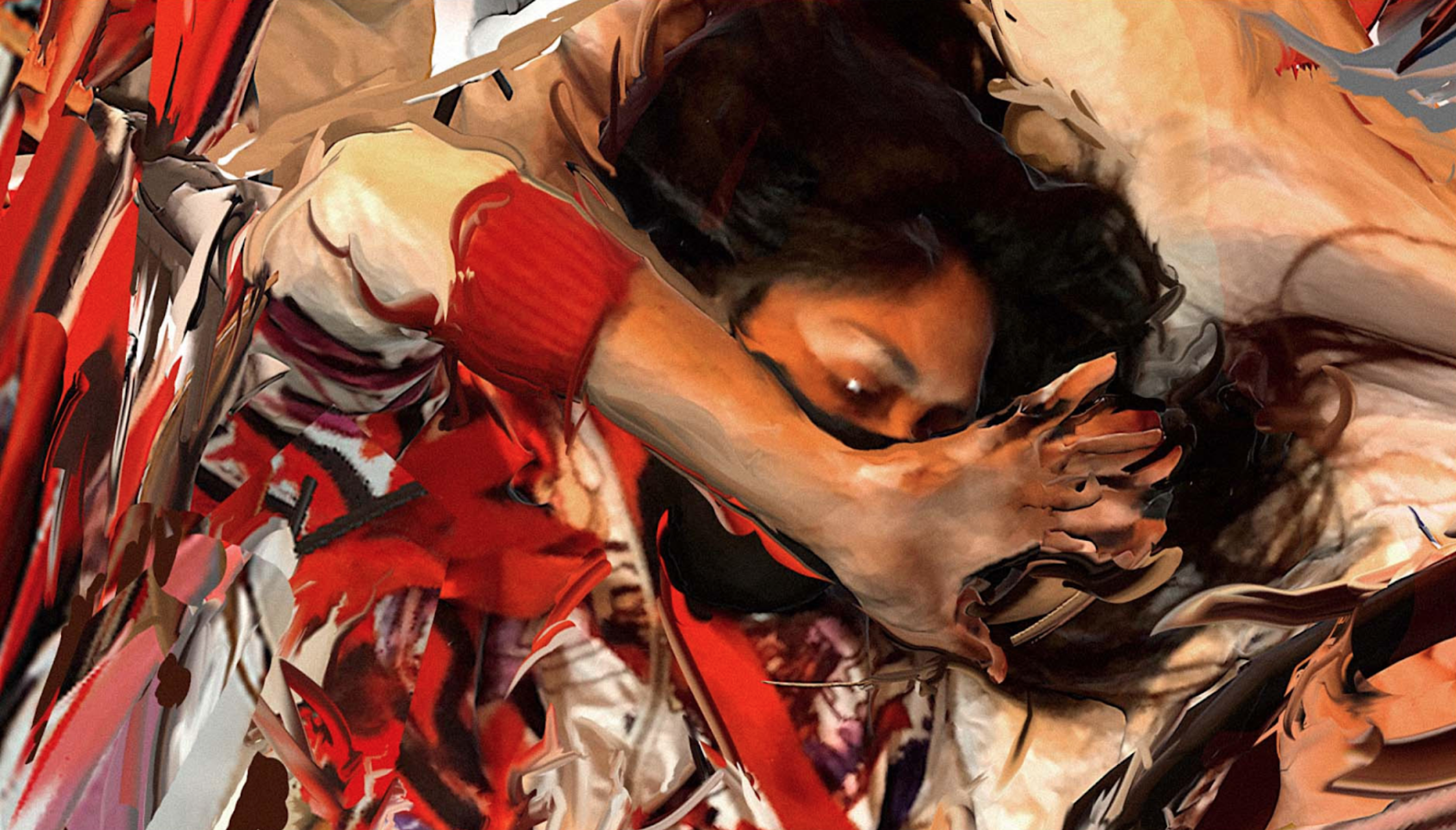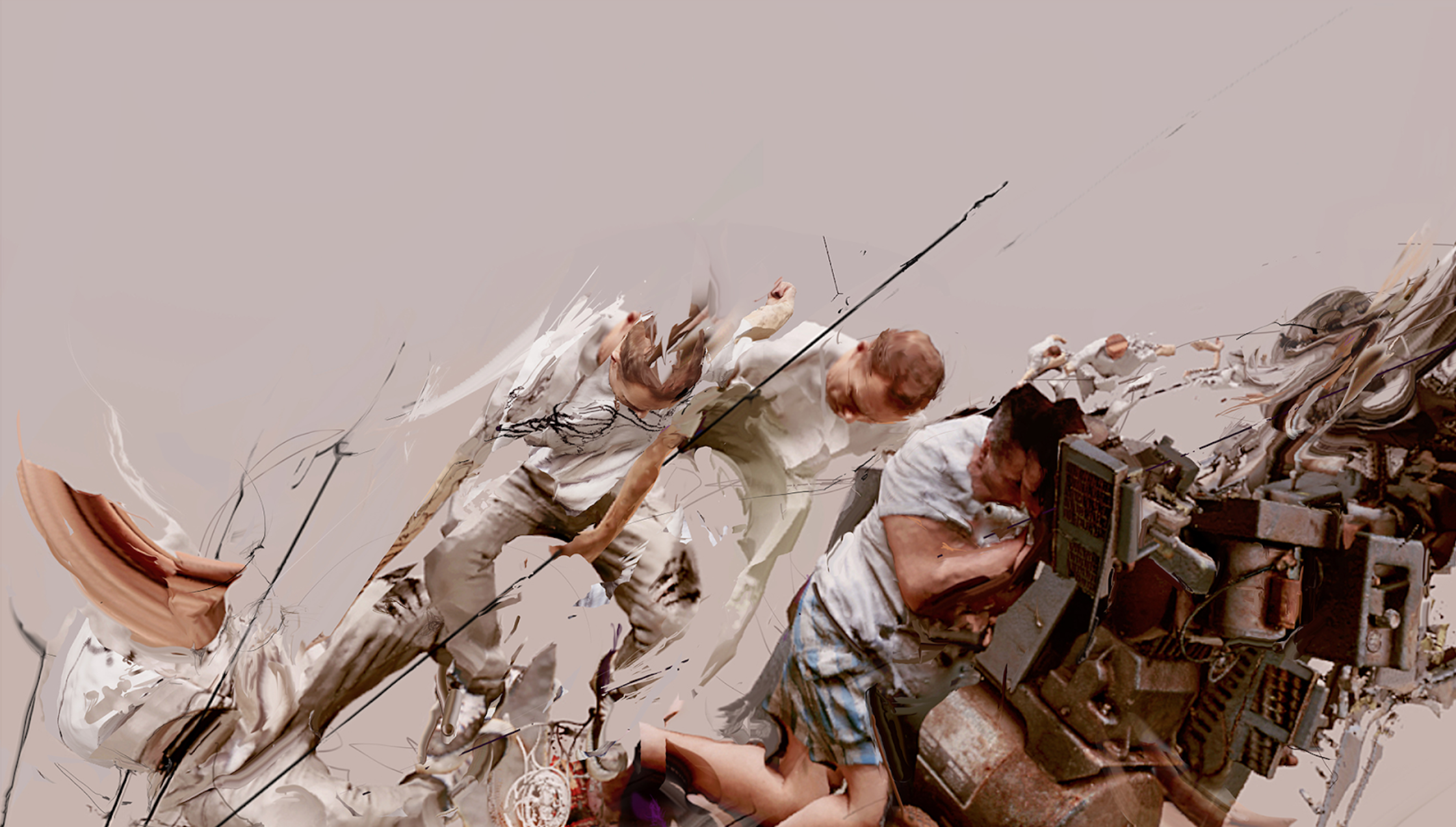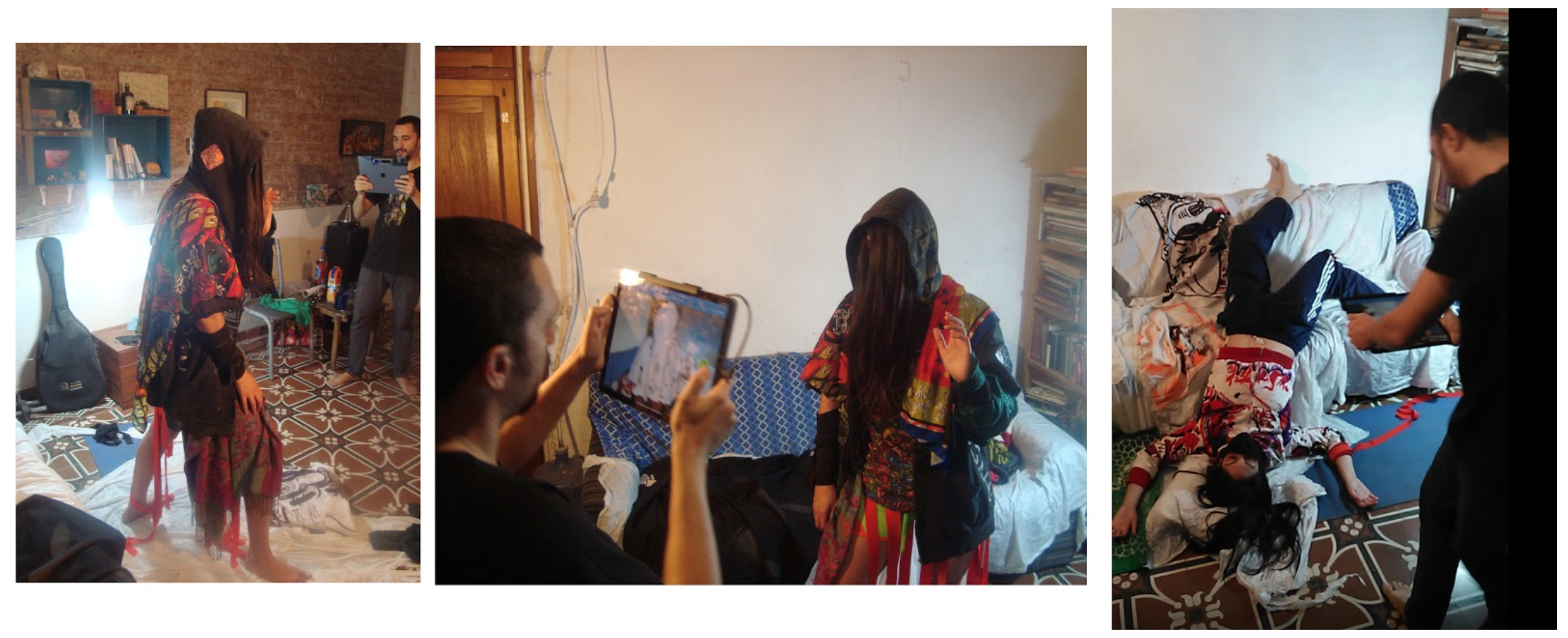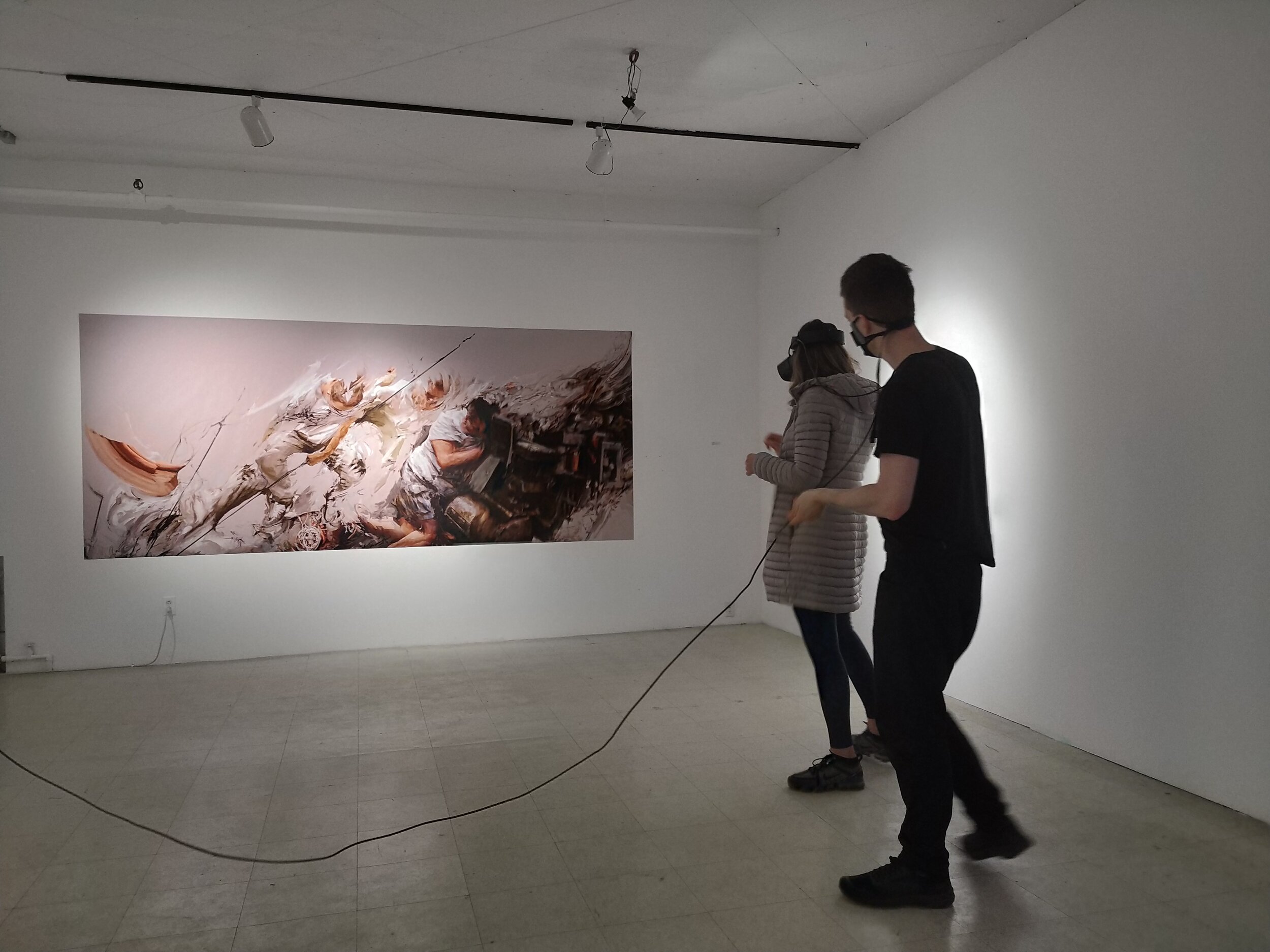Lucas Aguirre, a digital artist from Argentina, has almost single-handedly changed my opinion about the potential for digital 3D as a tool of expression for art of the highest quality.
I spent the first half of my life in painting and sculpture studios and the second half of my life essentially in front of a computer. I was actually pretty slow to appreciate digital art, which may seem funny now that it is my life’s passion. Digital art executed in 3D, in particular, always seemed cold, sterile, and devoid of humanity to me. Even after spending years learning Maya 3D and working as an animator in the early 2000s, the medium always left me feeling flat.
It was not until very recently that I first saw 3D work that captured all the visual nuance, emotional complexity, and sophistication of the painters I grew up admiring. And while sometimes a medium evolves slowly, improving incrementally across several generations of artists, other times you get a hyper-leap in a medium from the work of a singular artist. Such was the case with Lucas Aguirre.
As a curator in art and tech, I’m a bit of an addict when it comes to finding new talent. It’s not uncommon for me to stay up all night looking through a never-ending stream of work on various platforms starving for something new. It was on one such night that I stumbled upon Aguirre’s work fittingly titled Viejos problemas nuevas soluciones (Old problems new solutions).
Viejos problemas nuevas soluciones is the kind of work you can come back to over and over again without having a sense that you have somehow solved it. For me, the work was immediately loaded with questions that I could not answer. What am I looking at? What activity are these figures engaged in? How the hell was this created? And most importantly, who made this and where can I find more of it!
In trying to figure out how this was created, I ruled out 3D right away. The figures in this work were far too emotive, the lighting too subtle, the mark-making too fluid, expressive, and natural. Perhaps it was a photo that had been digitally manipulated and then hand painted? …No, there was too much of a sense of dimensional space here. The work is sculptural and lacks the flatness increasingly common to digital photography. And while the splashes and smudges felt authentically organic, as if governed by gravity, it was also clear to me that they were likely CG despite any trace of an algorithmic origin.
I read Viejos problemas nuevas soluciones as a tragic work, one where human figures are hurled like rag dolls into obscured rusty machinery that could just as easily be from the digital age as the machine age. A portrait of the violent pace at which humans have been thrust into technological whiplash with no time for reflection or recovery.
I also know Aguirre is from Argentina. Knowing a bit about the country because many of my other favorite digital artists were born there, I wondered if Aguirre’s depiction of the crumbling infrastructure and tumult in this work were autobiographical? Aguirre shared with me that:
Argentina is kind of a chaotic and vibrant space, perpetually growing on an unstable equilibrium. That gives it a special way of living. In my 40 years existing there I already lived through a lot of economic crises, including a Venezuelan-like hyperinflation in the eighties, a two-days’ police strike that made my city go WILD, and having like seven presidents in a week in 2001.
A large portion of the population are never comfortable, always searching for ways to survive. I lived in that state for the last 20 years. With the COVID, I think the world is now learning to share this particular mindset of instability. Lots of things are now re-examined. Fewer things are taken for granted.
Aguirre makes the modern feel heroic and historic, which in some ways reminds me of the portraits of Kehinde Wiley. Only rather than using the tools of the old masters, he is using bleeding-edge technology. For the creation of his work, Aguirre uses an iPad and a 3D scanner, often working with live models to choreograph his compositions. He pays meticulous attention to the details. For example, in this work, the model is wearing clothes designed and stamped by a very close friend.
Once Aguirre has scanned the models, he loads them into virtual reality software where he further manipulates them, adding and subtracting material and painting the models. Aguirre shares:
This process is vital for me, as I can work in 3D with my whole body, as when painting a big-sized canvas, the velocity of my gestures, the pressure, all creates a particular aesthetic, and it’s infinitely more sensual than sitting at a PC using tools like ZBrush. VR was the real game changer for me, and photogrammetry and 3D scanning gave me the possibility to use pieces of the world, not generic 3D mannequins. In the final stage I use Photoshop where I get more freedom; I can tweak the 3D nature of the renders into something else. I love the gray area between the 3D realm and the 2D space of representation.
The results are stunning and have evolved into a lush signature style on display in the works below.
The majority of the contemporary digital artists I admire typically feel like a natural extension of twentieth-century art aesthetically and conceptually. Uniquely, Aguirre and his work often feel more rooted in the 1600s to me. His previous series of works are what I would imagine Caravaggio would produce had a supercomputer been sent back in time.
Aguirre’s womb-like masterpiece Vessel is rich with patterned drapery and rendered flesh cloaked in chiaroscuro that has more in common with works like The Calling of Saint Mathew and The Incredulity of Saint Thomas than more typical reference points for digitally generated 3D imagery like Toy Story or Grand Theft Auto. The work feels natural and deeply warm, as if built from earthen ground-up pigments and surface materials found in nature. Though painterly, it does not feel like a faux painting nor a 3D rendering, but is instead its own thing, a wonderful thing.
Aguirre was recently invited by artist/curator Samuel Arsenault Brassard to show his work as part of a one-year cycle of XR (augmented, virtual, and mixed reality) shows at Art Mûr in Montreal to celebrate their 25th anniversary. The exhibition will present an installation of large giclée prints on framed cotton canvas, a virtual sculpture, and several NFTs, both static and dynamic.
I’m already planning out the six-hour drive to Montreal as I will not miss the opportunity to see these works live and in person. And while Aguirre shared that the show at Art Mûr will be his first international show, I’m certain it will not be his last.
Aguirre’s power to emote and compose epic work inspired by the everyday through an astonishing new lens built on modern technology puts him in rare company among contemporary digital artists. It is this ability to show us new things and make us feel new feelings that I value most about art. Aguirre does this to great effect, and as I see the rapid evolution his work has taken, I am confident that despite the great bounty he has already given us, his best work is still ahead of him!








